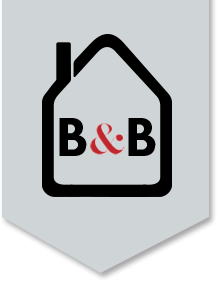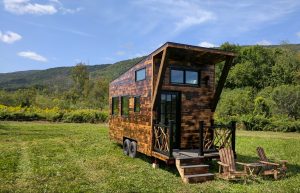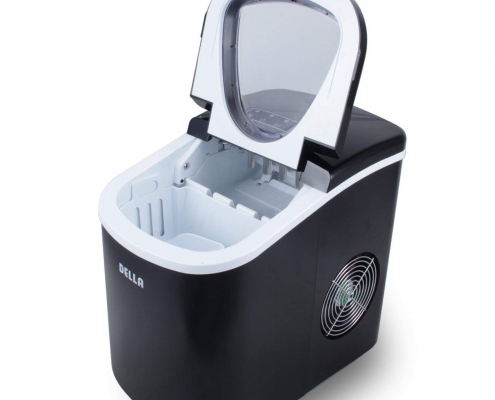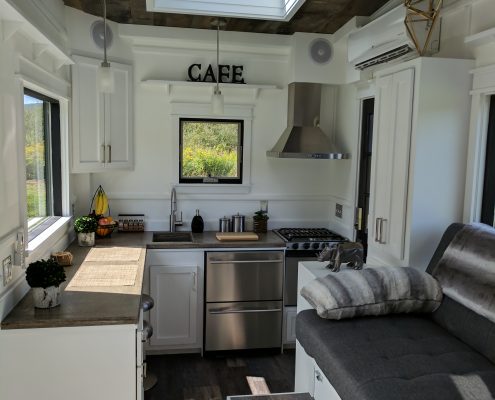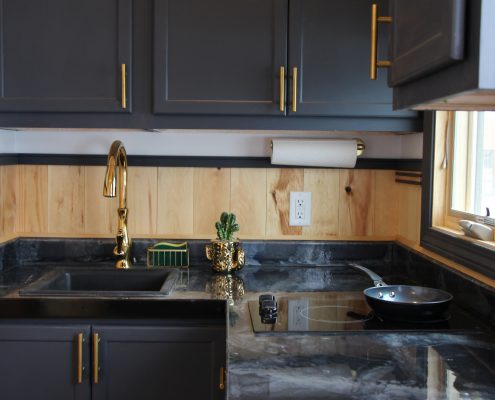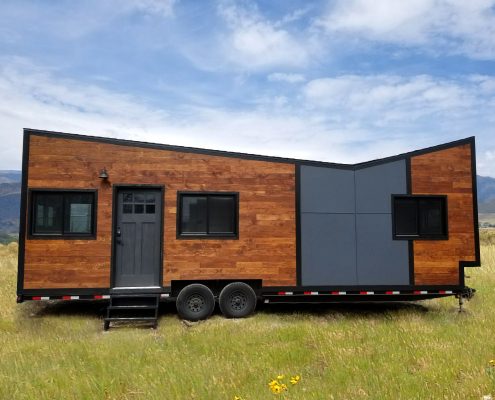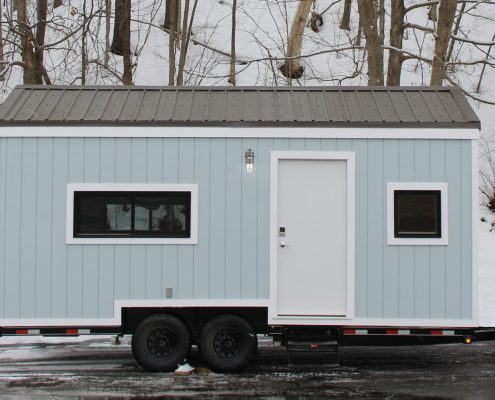What does it mean to live off-grid?
/in Lifestyle, Sustainability /by Rick PorcoOff-grid living has been growing in popularity in recent years. There are different interpretations of what off-grid living is; however, generally, 0ff-grid living implies that where you live is not connected to the electrical grid. This means that people that live off-grid must use some form of renewable energy if they wish to have electricity. In addition, it usually means that they are not connected to the municipal water supply. Because of this, it’s apparent that off-grid living presents some challenging circumstances; however, becoming one step closer to being fully self-reliant is highly rewarding to some.
Why would I want to live off-grid?
There are many reasons why people choose to live off-grid. It can be a great opportunity to try something new and disconnect–even if the city’s power goes out, you will still have power! In addition, over time you will save money on electricity bills; however, renewable energy, like solar panels, can have a high initial cost.
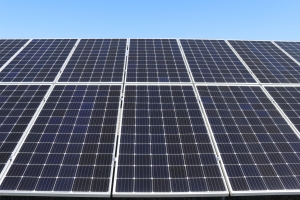
It is also worth mentioning some of the drawbacks of off-grid living. The upfront cost of solar panels and extra effort required to ensure that you are allowed to be off-grid on your land are important considerations.
How do I live off-grid in a tiny house?
Admittedly, there are different ways to live off-grid. When figuring out the right option, you should take into consideration how your tiny house will get power and water. You can use a generator or solar panels for power. For water, you either have the option of bringing the water to your property and holding it in tanks built into your tiny house or building a water collection tank from rainfall (this option isn’t likely to keep enough water on hand for typical consumption). Living off-grid is completely feasible in a tiny house; however, it requires additional planning. If you would like more information on off-grid living, send us a message through our contact page!
Tiny House Security
/in Lifestyle /by Rick PorcoHow to Secure Your Tiny House Against Break-Ins and Theft.
A thief would have to be pretty determined to steal a whole house. A tiny house on wheels is a highly visible item and most are custom-built, making it an easily recognizable theft. It’s not the type of thing a thief can slip away with in the night and sell on the internet, never to be seen again. There are only so many places on the internet to sell one, all of which can be monitored to see when the house comes up for sale. Additionally, to transport a tiny house, one can take it on certain roads, but it has to have a license plate, and any tiny house owner can attest that tiny houses on the road generate a lot of buzz.
However, two recent thefts of tiny houses have popped up in the news, reminding us that while rare, it can happen. On that note, it’s important to find a way to secure one’s tiny house and prevent or at least deter thieves from breaking in or stealing it.
The best course of action to ensure your house’s security is having multiple theft deterrents. The idea of theft deterrence is realizing you can’t do everything possible to ensure your house will never get broken into or stolen altogether, but there are many small things you can do to discourage criminal activity. Many thefts are crimes of opportunity: if you make it a difficult and time-consuming for a thief to quietly drive away with your house in tow, they are more likely to pass your tiny house up.
Just a note: we’ve included links to certain products in this article. We aren’t being compensated for posting any of these products and we don’t necessarily recommend or guarantee these exact products: the links are here so you can get a feel for what they are and how they work.
 Trailer Hitch Lock:
Trailer Hitch Lock:
A hitch lock is an easy, quick theft detterent. It can be cut off, but not without spending some time and creating some noise. This will at least slow down a potential house thief, and some have the added benefit of preventing runaway trailers.
There are numerous types of trailer hitch locks, ranging in price from about $17-$45. Here’s a list of reviewed trailer hitch locks from thetoppro.com.
 Wheel Lock:
Wheel Lock:
These work in many different ways, but the one pictured here covers the wheel, rendering it immobile. You can also purchase locks for the lug nuts themselves. Here’s a list of wheel locks from etrailer.com: they range in price from under $10 to $180.
GPS Tracker:
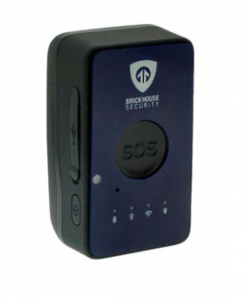 God forbid someone actually gets away with your tiny house, it would be easy to track if you have one of these in or on your tiny house. Hundreds of discreet GPS trackers are on the internet, and many are inexpensive enough to make the purchase worth the peace of mind you’d get from having one. The tracker pictured here, from Brickhouse Security (here are their best GPS trackers), is less than 2″ x 3″, so you can place it inconspicuously so a thief doesn’t know it’s there. You can track its location on your phone or computer.
God forbid someone actually gets away with your tiny house, it would be easy to track if you have one of these in or on your tiny house. Hundreds of discreet GPS trackers are on the internet, and many are inexpensive enough to make the purchase worth the peace of mind you’d get from having one. The tracker pictured here, from Brickhouse Security (here are their best GPS trackers), is less than 2″ x 3″, so you can place it inconspicuously so a thief doesn’t know it’s there. You can track its location on your phone or computer.
Security Camera:
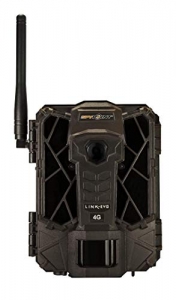
As the economy forces package thieves to become bolder and bolder, the market for home security has exploded, and security cameras are getting cheaper every year. Even if your security camera doesn’t prevent the most determined thief, it is certainly a theft deterrent. Some security cameras use motion detection to start recording a ten-second video; others record all the time.

Security cameras that store the images and/or video inside them are only helpful after you recover the camera itself. A smarter choice is either a wifi-connected home security camera like Arlo or Nest, or a trail cam, which operates on cell data (you’ll have to pay monthly). Both a wifi-connected cam (here are PC Mag’s top picks for 2019) or a trail cam (here are Trail Cameras’ Reviews for 2018) allow you to see the images in near-real-time on your phone or computer.
Smart Home Security System:
 If a security camera isn’t enough, you can have a whole integrated security system in your tiny house, as long as your house gets constant power. Smart home security systems like Honeywell’s allows you to choose a la carte what features you’ll use, such as notifications when windows or doors are opened, motion light activation, facial recognition of those entering your house, and voice control with Amazon Alexa.
If a security camera isn’t enough, you can have a whole integrated security system in your tiny house, as long as your house gets constant power. Smart home security systems like Honeywell’s allows you to choose a la carte what features you’ll use, such as notifications when windows or doors are opened, motion light activation, facial recognition of those entering your house, and voice control with Amazon Alexa.
(Full disclosure– Honeywell’s not paying us to post this, but we did build a tiny house for them integrating their smart home tech, so we’re familiar with their technology and we like their brand).
Timed Lights:
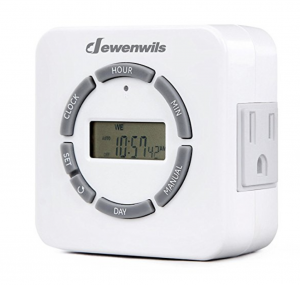

These lights are great for when you’re not at home but want to give the impression that someone is there.
The simplest and cheapest option is a light timer, which can either be plugged into a wall socket (this one’s by Dewenwills, pictured at left) or integrated into the light switch plate (this one’s by Honeywell, pictured at right). It turns a lamp or electric outlet on and off at a specific time or times every day. The mechanical ones make a clicking sound that will drive you nuts in a small space, so we recommend an electronic light timer.
Motion-Sensor or Remote-Controlled Lights:

Most people have been familiar with motion sensor lights for decades. Not only can they be a theft deterrent by attracting attention to the house when there’s movement, they can also increase the security of the tiny house dweller when coming home and fumbling for keys in the dark. Here’s The Spruce’s list of best motion sensor lights for different outdoor areas. Some of these contain the sensor within the bulb, so the bulb can be screwed directly into any light socket, which means you won’t have to do any wiring to make them work. Some of the lights on this list run on their own solar power which is nice for when your tiny house isn’t connected to a power system.
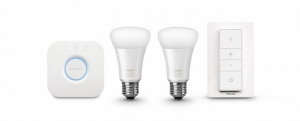
Like timed lights, remote controlled lights help create the illusion that someone’s home, but they’re a bit “smarter” in terms of going on either when they sense motion or when you decide to activate them from afar via your electronic device. Remote-controlled smart lights, for when you’re far away to your wifi-connected tiny house, allow you to turn on a light in your home via an app on your phone. Here are a couple ways to integrate smart lights from Make Use Of, whether your house hasn’t been built yet and you can install these during the building process, or you’d like to install plug-and-play smart lights in your exisiting tiny house. You can also get remote control of the lights in your tiny house by incorporating them into your existing smart home security system.
Neighbors:
 This one’s pretty simple: although not all tiny house owners are parked near neighbors, those who are and have a friendly rapport with them can ask their neighbors to keep an eye on their tiny house. Having possible witnesses close by is a major deterrent to break-ins and thefts.
This one’s pretty simple: although not all tiny house owners are parked near neighbors, those who are and have a friendly rapport with them can ask their neighbors to keep an eye on their tiny house. Having possible witnesses close by is a major deterrent to break-ins and thefts.
(Pictured: The Hoosic Tiny House flanked by two other tiny houses. Photo by Try It Tiny)
Location and Recognition:
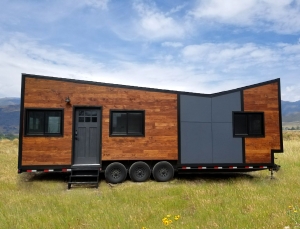 When choosing a location for your tiny house, from a theft deterrent standpoint, consider how easy it is for someone to get away with your tiny house. Anyone who’s ever towed a tiny can attest that tiny houses attract a lot of attention on the road. People peer out of their windows, take photos, post them on the internet. Whether you want to attract attention or not, it’s like being in a single-float parade.
When choosing a location for your tiny house, from a theft deterrent standpoint, consider how easy it is for someone to get away with your tiny house. Anyone who’s ever towed a tiny can attest that tiny houses attract a lot of attention on the road. People peer out of their windows, take photos, post them on the internet. Whether you want to attract attention or not, it’s like being in a single-float parade.
Likewise, if your tiny house is easily recognizable, it’s more easily recovered. An unusual looking tiny house can’t go as far and long without being reported.
Tiny House Anchoring:
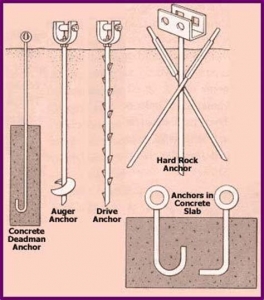 For those who do not travel with their tiny house, tie-downs aren’t just a good idea for theft deterrence. They’re also a great idea to keep the house from rocking or even lifting during a hurricane. Although one can remove the house from the anchors (with varying degrees of difficulty depending on which type of anchor you’re using), this takes time and is another way to deter theft.
For those who do not travel with their tiny house, tie-downs aren’t just a good idea for theft deterrence. They’re also a great idea to keep the house from rocking or even lifting during a hurricane. Although one can remove the house from the anchors (with varying degrees of difficulty depending on which type of anchor you’re using), this takes time and is another way to deter theft.
Additionally, building a porch onto the front of your tiny house not only expands your livable space in nice weather and creates a more welcoming entrance, it makes it more difficult for a thief to quickly steal your tiny house.
Tie-in to septic and sewer:
 Like anchoring with tie-down straps, it’s not impossible to remove a septic or sewer tie-in, but it takes longer, requires tools and knowledge which means it takes longer to steal someone’s house. Of course, not all tiny houses stay in one location– they are on wheels, after all– but for those that do, this is a great option.
Like anchoring with tie-down straps, it’s not impossible to remove a septic or sewer tie-in, but it takes longer, requires tools and knowledge which means it takes longer to steal someone’s house. Of course, not all tiny houses stay in one location– they are on wheels, after all– but for those that do, this is a great option.
Image from My Camper Home on Youtube
Remove tires:
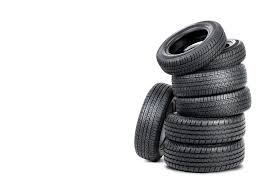 When the tires are removed, a thief can’t just hook up a tiny house to their truck and roll away with it. It takes time and tools to attach four or six tires to the wheels of a trailer: time that exposes a thief to witnesses.
When the tires are removed, a thief can’t just hook up a tiny house to their truck and roll away with it. It takes time and tools to attach four or six tires to the wheels of a trailer: time that exposes a thief to witnesses.
You can’t say for certain that your tiny house will never be broken into or stolen. However, the chances of that are very slim; you can make them slimmer by taking some of these simple precautions.
What’s the Best Size Tiny House for Travel?
/in Lifestyle /by Rick PorcoTiny Houses on Wheels are sized for the road.
An 8 1/2 foot width is standard in tiny houses because that’s the maximum width that can safely travel down roads without an oversize permit. We also build some tiny houses on wheels 10+ feet wide as Park Model RVs and procure oversize permits in every state they’ll travel through to get to their destination. 10+ foot wide houses, of course, aren’t recommended as houses that will travel more than once.
While the length of tiny houses is variable (we’ve built everything from 16 feet to 32 feet) the height is also restricted by the road. 13 1/2 feet tall is the maximum, which means the ceiling can be just over 10 feet from the floor inside the tiny house. That’s why we can’t build a sleeping loft you can stand up in– unless you’re only two feet tall.
What size vehicle do you need to own to tow your tiny house?
You should have a vehicle with a towing capacity that exceeds the weight of your tiny house. This article will help you determine what towing capacity you’ll need based on the estimated weight of your tiny house.
It can be helpful to take lessons first.
If you don’t have experience towing, see if there are classes offered in your area before you set out on the road with your tiny house in tow. If you don’t want to take an entire course, have someone you know who’s experienced in towing give you a few pointers. Having someone watch what you’re doing in-person is more helpful than YouTube videos, because they can tell you what you’re doing wrong and right.
Shorter tiny houses are lighter.
We recommend a house up to 24 feet long for towing. Anything larger (or heavier) gets unwieldy for travel. (We can still build a bigger house if you’re not planning on traveling with it!)
If you don’t want to tow your house, hire a professional.
There are companies that do this all day, every day so you don’t have to. If you’re only moving your house once, it may be best to leave the towing to the pros. If you’re on the east coast, email us at [email protected] for a towing company recommendation.
Where Can I Put My Tiny House? A Near-Comprehensive List Of Tiny House Parking Resources
/in Lifestyle /by Rick PorcoWhere Can I Park My Tiny House?
This is a question we get almost every day. Often, your town won’t have already considered whether to allow tiny houses as year-round residences: it just takes someone to ask.
Start out by looking at the zoning laws in your own town. B&B Tiny Houses are built to RVIA standards, which legally classifies them as RVs. If your town or city doesn’t allow RVs, then you can either ask your planning board or go to another town.
Networking is a common way people find spaces for their tiny houses: start out on Facebook, Meetup, or in person at a tiny house festival. By using personal networking rather than tiny house websites, you might find someone with land willing to rent a space to you who hasn’t previously heard about tiny houses or considered renting a small piece of their land for one. Try Facebook Groups that are tiny house specific, or just general community groups. Before agreeing to rent someone’s land, though, make sure both you and the potential landlord are aware of the tiny house legalities in that community.
Countrywide Resources on How To Find Legal Tiny House Parking
Search Tiny House Villages: RV Parks, villages, and communities across the United States and Canada that allow tiny houses.
Try It Tiny: Short-term and long-term rental lots, often on privately owned property, for your tiny house as well as tiny houses for rent.
State and Region-Specific Tiny House Networking
This list was updated in April 2019 by adding new groups, deleting now-defunct groups, and improving formatting. Did we miss anything? Let us know via email: [email protected].
What’s The Difference Between a Modular Home and a Tiny House on Wheels?
/in Lifestyle /by Rick Porco
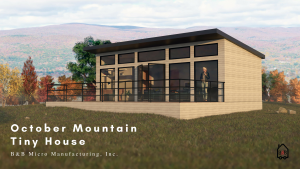
Left: A Tiny House on Wheels- the wheels are obscured by shrubbery. Right: A Modular Home: no wheels, slab foundation (coming soon!)
Tiny Houses on Wheels
Tiny houses on wheels are permanently on the chassis. The tires can be removed but the house will always be on the trailer. If you want a tiny house on wheels but don’t plan to travel with it, we can also permanently anchor a tiny house on wheels to the ground, remove its tires, and skirt it. Road-legal limits of 8 1/2′ wide and 13 1/2′ high constrain the size of tiny houses on wheels. We are certified to build tiny houses on wheels by the RVIA, so our tiny houses on wheels are legally considered RVs. Tiny houses on wheels don’t require a building permit, but you’ll need to make sure RVs are allowed in your zone of your town.
Modular Homes
Modular homes are constructed in pieces in a factory and then transported to the home site to be assembled and attached to the foundation. They look just like traditional houses– you can’t tell the difference between a modular home from a traditional home just by looking at it– and can be any shape and size as long as each module is small enough to travel from the factory to the build site. After a modular home is built and inspected inside the factory, it is transported to the site and then permanently attached to a foundation (basement, slab, or pin foundation) where it is inspected again. B&B Micro Manufacturing is certified to build Industrialized/Modular Homes by the State of Massachusetts. Modular homes are financed using traditional home financing and there’s no difference in zoning for a modular home versus a traditional site-built home. B&B Modular designs will be released soon.
Both types of homes are built inside our factory in Massachusetts. The advantages of factory-building include a quicker build time (we don’t have to stop working in extreme weather) and a less expensive build, especially when the home is built alongside other homes of the same design.
10 Must Have Kitchen Appliances in Your Tiny Kitchen
/in Design, Lifestyle /by Rick Porco10 Must Have Kitchen Appliances in Your Tiny Kitchen
Tiny living doesn’t mean you have to sacrifice the ability to make delicious home cooked meals. Below are some neat appliances that can make cooking easier and more fun!
1. All-in-One Crock Pot
These bad boys are able to slow cook, pressure cook, steam, and saute your food. No oven required for delicious meals!
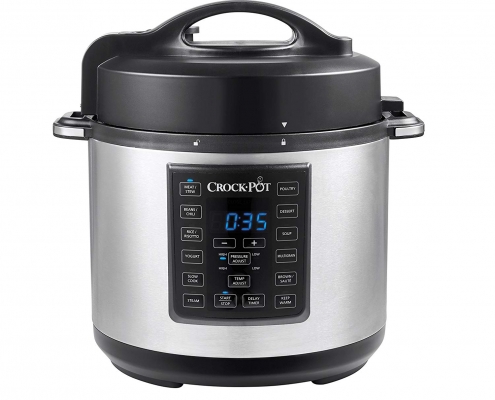
2. Food Steamer
Steamers are easy to clean, healthier as they don’t require oil, allow you to cook all your dinner items at the same time, and require very little supervision.

3. Rapid Egg Cooker
These small egg cookers can serve you poached, scrambled, hard boiled eggs, and omelets in no time. And now time for an egg pun…What does a meditating egg say? Ohmmmmmmmlet.
 4. Ice Maker
4. Ice Maker
This ice maker can make ice cubes in 6 minutes and will make up to 26 pounds of ice daily.
5. Single Serve Blender
Yummy smoothies are quick and fast with this single serving blender that features one bottle for blending and drinking.
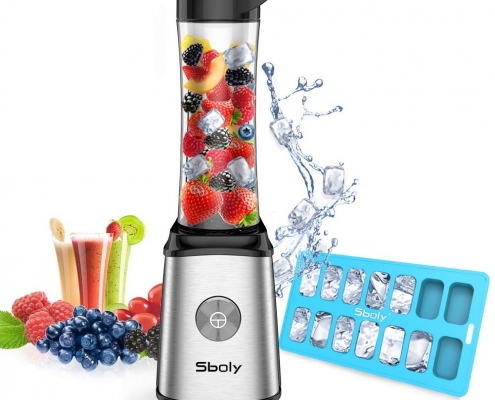 6. 3-in-1 Breakfast Station
6. 3-in-1 Breakfast Station
Simultaneously make coffee, pancakes, eggs, toast, and sausage. This is a dream come true!
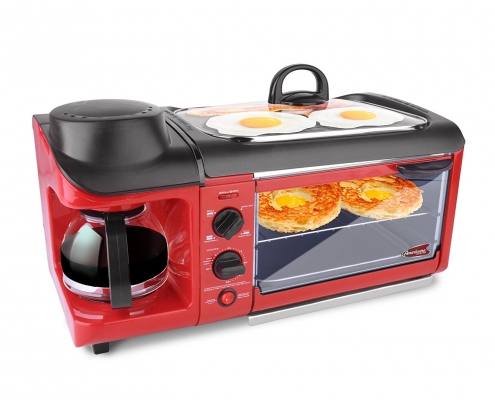 7. Breakfast Sandwich Maker
7. Breakfast Sandwich Maker
Finally a fool-proof way to make a circular egg for your breakfast sandwich.
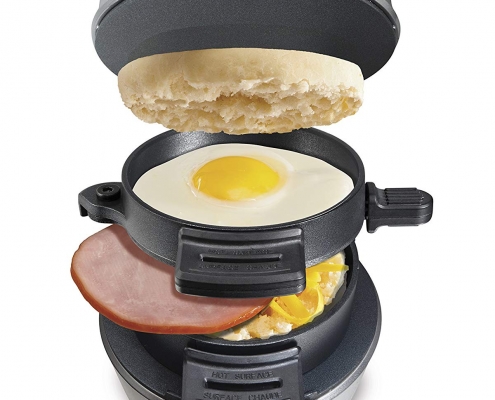 8. Gridler
8. Gridler
Bring the grill indoors with this space-efficient appliance.
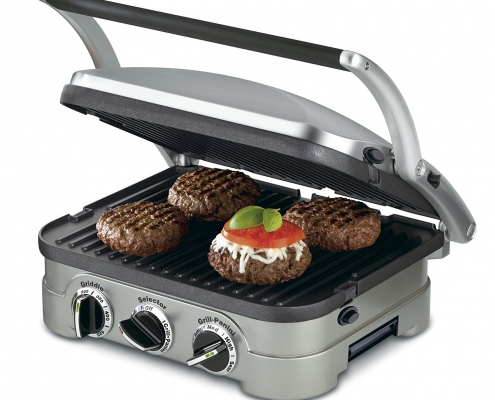 9. Pizza-Maker
9. Pizza-Maker
Pizza is unarguably the best meal on the planet.
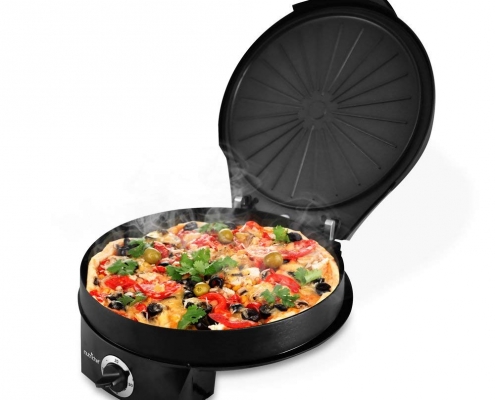
10. Kitchen Herbs
Plant these herbs in pots and put them right below your kitchen window for a green touch and delicious dishes.

B&B Tiny House Kitchens
How to Start a Tiny House Hotel Business
/in Lifestyle /by Rick PorcoWhat is a tiny house hotel?
A tiny house hotel can be a great spot for campgrounds, wedding venues, retreat venues, and much more. The possibilities are endless for what a tiny house hotel can provide. Tiny house hotels offer a more intimate experience with their environment than traditional hotels for the same price.

Arcadia Tiny House at Woodlife Ranch
Tiny house hotels can usually range from $125-$300 per night. Tiny house hotels contain houses under 400 square feet, are often located in scenic places, and offer guests the chance to explore the outdoors or local attractions. Many tiny house hotels offer the features of a traditional hotel: they can sleep 5+ people, have wifi/cable, have an outdoor deck/grill, and have a full bathroom/kitchen. In addition, they can offer unforgettable experiences for weddings, dining, business retreats, and family reunions. For some examples of tiny house hotels, check out these tiny house hotels across America.
Tiny house hotels usually have the customers book their stay online and then on the day of their arrival the customer will receive a code in order to get into the tiny house. The days of traditional check in are in the past!
In addition, tiny house hotels can be formed on a smaller level. As long as you have land and one tiny house, then you can set up a cozy bread and breakfast. Read our blog post on how to make money on your personal tiny house for more information.
Choosing the Right Tiny Houses For Your Hotel
When determining the tiny house you want to use for your hotel, you want to make sure that it is fully accommodating to your customer. Will your customers be able to sleep their entire family? Is there enough built in storage for food and clothes? Does the design allow for your customers to feel connected to the scenic outdoors? Is their something unique and memorable about your hotel?
One of the great things about tiny house hotels is that it’s very easy to expand your capacity. As long as there is land and electricity/water available, tiny house hotels can add more units whenever they wish.
Attracting Tiny House Hotel Customers
The location of your tiny house hotel may be your biggest selling point. Many customers decide to stay in a tiny house because they’re looking to disconnect and spend time outdoors, so by choosing a location that is close to activities like hiking or swimming you ensure that your customers will have a great time while they’re on their vacation. In addition, customers may want to check out some cultural attractions while on their vacation. Locations that allow customers to spend time outdoors and are nearby to cultural attractions are optimal locations.
Most tiny house hotels allow customers to book through their website and through websites like AirBnB, Try it Tiny, VRBO, and Homeaway. When creating listings for AirBnB, it’s important to showcase what makes your hotel stand out. If your tiny house has a beautiful deck area with a grill, showcase it! Allow potential customers to envision what their time at your hotel would be like through pictures. In addition, social media is another tool to attract customers. Because lifestyle content is integral to social media, a tiny house hotel can attract a lot of attention on social media platforms. Social media is a great tool to garner interest in your tiny house hotel.
Finding Land
Figuring out where to develop a tiny house hotel can get tricky as you must make sure that local building codes and laws allow tiny houses.
Zoning Laws
After you’ve looked over the zoning and, if applicable, building codes for your specific zone of your town, you may need to ask the town permission to have a tiny house on your property. Most towns don’t already have tiny houses written into their zoning or building codes. If this is the case, don’t be discouraged: it doesn’t mean you can’t do it, it just means you’ll have to introduce the concept to the zoning board. In this blogger’s experience, zoning boards are made up of passionate people who want to find housing solutions for their towns. With tiny house TV shows and news stories all but taking over television networks, no doubt at least a couple of the folks on your town’s zoning board will already have an idea of what tiny houses are. They’ll let you know whether you need a special permit to have a tiny house on your property, and if so, guide you through the process.
Getting Utilities
For electricity, the cheapest and easiest option is to plug into an existing power source. Others choose to power their homes with solar power. Click here to learn more about solar power for tiny houses.
For fresh water and waste water, city water and sewer are one option; pieces of property in less dense locations that don’t have city water and sewer will need to use a well and septic systems.
If the land already has electricity and water hookups, you won’t need to worry about having those put in. Generally, although not always, it’s less expensive in the end to buy land that already has utilities than buying land without and then paying to have them installed.
How do I make it happen?
With determination, anyone can open their tiny house hotel. You have many options for securing funding. Read these 10 ways to get funding for your business and 6 tips for securing investments. As previously mentioned, a great aspect of tiny house hotels is the ability to grow your business whenever you please.
If you have any questions about developing a tiny house hotel, please contact us! We have experience in mass producing tiny houses for hotels.
Why Tiny Houses Can Be for Almost Anyone
/in Lifestyle /by Rick PorcoWho should own a tiny house?
Tiny houses have risen in popularity over the years, and there’s a good reason for this: tiny houses offer many perks that will appeal to almost anyone. Tiny houses are economical, sustainable, and can even be a great investment or supplementary source of income.
Baby Boomers
We’ve had baby boomers choose the tiny house lifestyle for a multitude of reasons. Some want a big change in their life, want a simpler life, or want to travel more. Also, we have had baby boomers choose to live in a tiny house and rent out their traditional house for additional income.
Millennials
With educational loans and rent costs rising, many millennials are delaying buying a house–only 20 percent of millennials have a mortgage. In addition, many millennials find the pros of living more sustainable and minimalistic very desirable. Tiny houses allow millennials to put money that would otherwise be going down the drain towards an investment that they can get back.
Those Wanting a Simpler and more Environmentally Conscious Life
If you’re looking for a change in your life and yearn to get away from all hecticness that overconsumption can bring, the tiny house lifestyle may be the solution you’ve been seeking. The minimalistic lifestyle is about owning the perfect amount and focusing on your needs and talents in order to become the happiest version of yourself. Because space is a commodity in a tiny house, it makes you to only keep and buy what will add value to your life. Read more about minimalism here.
On and off-grid options allow tiny house owners to reduce their carbon footprint–a net zero carbon footprint is possible in off-grid living. Tiny houses require less materials to build and use significantly less water, heating, and cooling because of their size. In addition, their size limits the amount of waste produced. Check out these two blogs to learn more about simple living and off-grid living.
Families
Families that decide to go tiny may use the house for vacations or live in it full time. Although living with your family in a tiny house will undeniably bring its own challenges, the benefits of living in a tiny house are immeasurable. Teaching your kids about the importance of memories and family are just a few! Read about this five person family that decided to go tiny full time.
Families Looking for Flexible and Accessible Housing
Families with aging parents or those that want to provide their older children with special needs an increased sense of independence can turn to tiny houses. Nursing homes cost an average of $235 daily for a shared room, which is a hefty sum for most families. Our tiny houses can be built to ADA standards and are a much cheaper option. Additionally, the tiny houses can be placed and hooked up to your utility grid–allowing you to be walking distance away from the tiny house (as long as you ensure your town allows tiny houses).
Anyone on the Move or Looking for Weekend Getaways
Because many tiny houses are on wheels–ours at B&B are on wheels and RVIA certified–tiny houses can go wherever you travel. If you’re a person that loves to travel or are looking for a weekend getaway to go hiking, skiing, or otherwise enjoy yourself and save money by opting out of an expensive hotel, then a tiny house is a perfect fit for you. Whether you decide to build your tiny house on or off-grid, you will have many places to keep your tiny house; the amount of places you can keep your tiny house off grid are endless and in most places you can stay in your on-grid tiny house wherever a RV or trailer is allowed.
Developers, Renters, Campgrounds, and Hoteliers
Developers have started investing in tiny house campgrounds and hotels. These sites offer guests a unique way to travel and experience their surroundings. Check out these tiny house hotels across the United States.In addition, tiny house owners can rent out their tiny house on sites like AirBnB when they are not using it. Read our blog post on turning your tiny house into an investment. Tiny houses provide a great business venture for those that wish to embark.
Want to stay up to date on tiny house news? Fill out our form below.
All About Composting Toilets
/in Building, Design, Lifestyle, Sustainability /by Rick PorcoComposting toilet
Composting toilets are the best option for those wishing to live sustainability and off-grid. Composting toilets will cost more upfront and will require additional steps; however, they also save water, energy, and waste can be recycled as fertilizer.
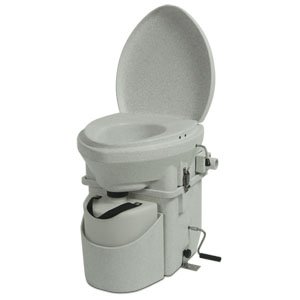
Good quality composting toilets are relatively odorless. Most of the toilets will have a fan that works to suck out any odor that would emit from the toilet. The toilets usually work by separating liquid and solid waste. Solid waste will go into one chamber that will be mixed with peat moss in order to help break the waste down. If you are staying somewhere where composting is not allowed, you will bag the solid waste in a biodegradable plastic bag and throw it away–much like a baby’s diaper is thrown away. Otherwise, you will be able to use the solid waste as compost. The liquid waste will be stored in a tank that will need to be disposed when it’s full. You can dispose the liquid waste in toilets, RV dump stations, or the ground if you are in a remote place where that is allowed. You will have to dispose of waste every 3-7 days for liquid waste and every 2-4 weeks for solid waste.
Pros
- environmentally friendly (reduces water/electricity use and creates compost)
- suitable for off-grid living
- cheaper in the long run than installing a septic tank
- odorless (as long as it’s properly installed and well taken care of)
Cons
- maintenance: the two types of toilets below require little to no maintenance unlike composting toilets
- you must always have peat moss
- may not be legal in your municipality: check with your town hall
Other Types of Toilets
We have previously written about other types of toilets in one of our previous blog posts. Three other types of toilets in tiny houses are traditional, macerating, incinerating and dry-flush toilets.
Traditional toilets that are used in houses can be used in tiny houses; however, traditional toilets can’t be used with tanks. This means that your tiny house must be permanently in-place and hooked up to septic or sewer system in order to use a traditional toilet.
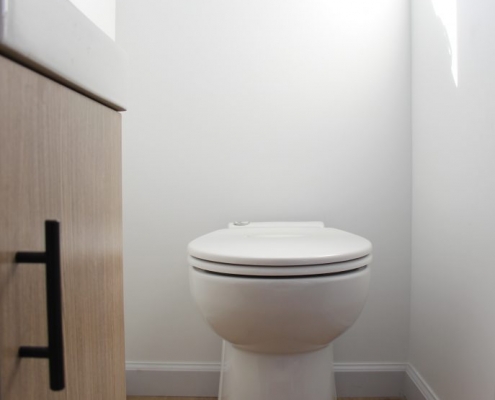
Dry flush toilets are lined with foil which, when “flushed”, wraps around the waste in a sealed packet, similar to a diaper genie. The packaged waste can then be thrown out in any trash can just like diapers. The flushing mechanism is also powered by electricity. For more information on these and our other types of tiny house toilets, read our previous blog post.
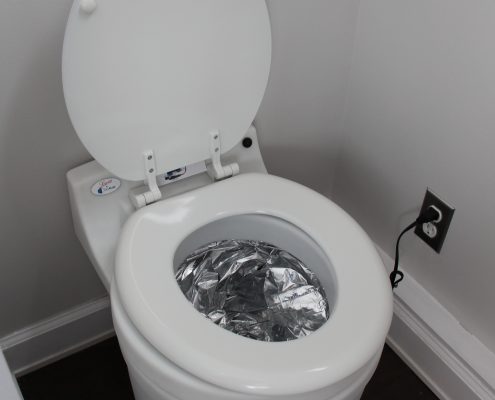
How To Get Started
Learn more about our process or fill out the form below and one of our tiny house experts will reach out to you.
